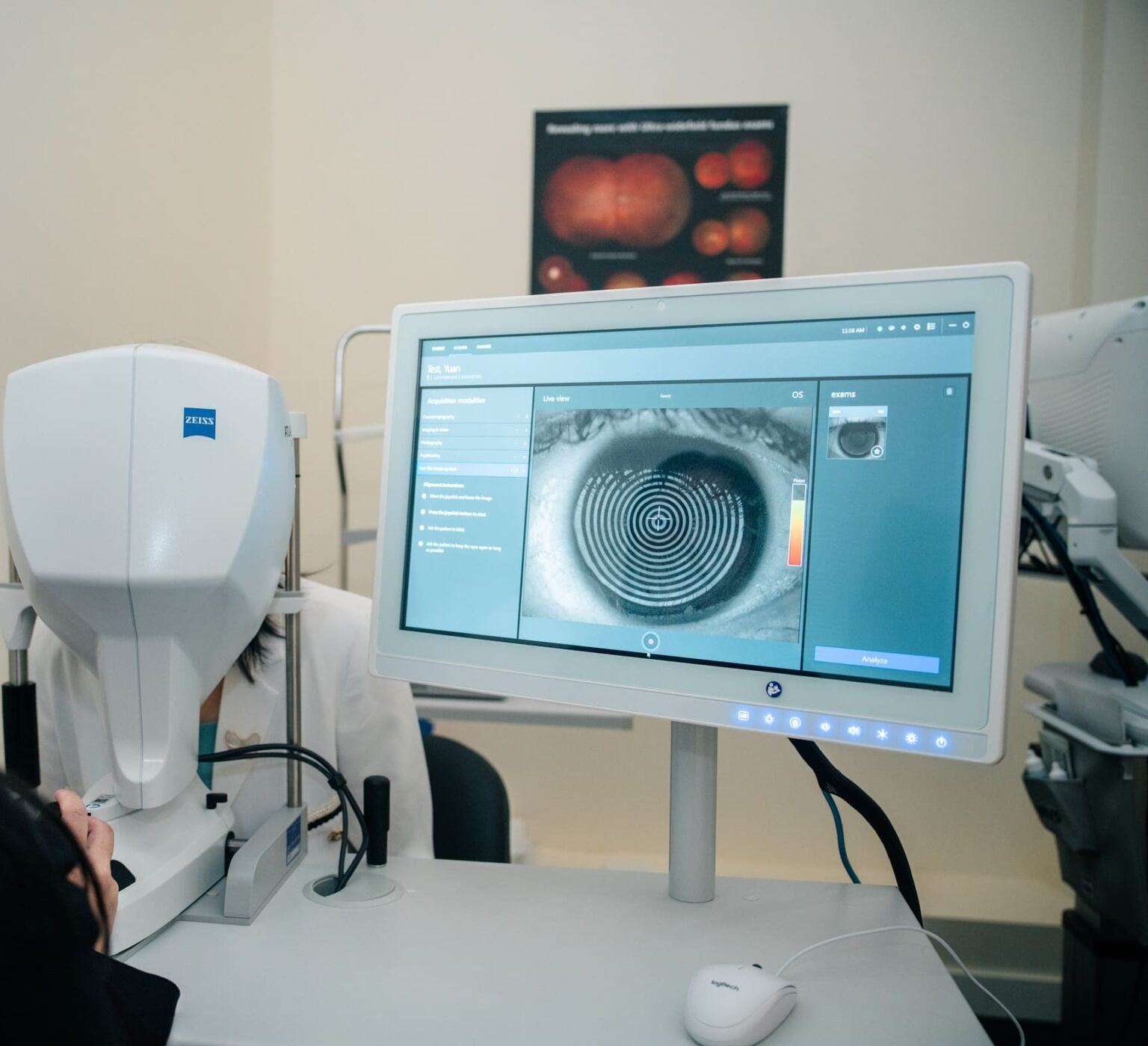What Is Ortho-K?
Orthokeratology (Ortho-K) involves specially designed hard contact lenses worn overnight to reshape the front surface of the eye. When the lenses are removed in the morning, the cornea retains its new shape temporarily, allowing clear vision throughout the day without needing glasses or daytime contact lenses.
What are the benefits of ortho-K?
- Myopia control: Ortho-K is an effective tool for slowing down the progression of myopia, especially in children and young adults. By gently reshaping the cornea overnight, Ortho-K lenses creates a focused image on the retina during the day. This reshaping also reduce the peripheral defocus, a key factor contributing to the elongation of the eyeball and myopia progression. By addressing both central and peripheral focus, Ortho-K helps slow myopia progression while providing clear vision. Studies have demonstraed Ortho K to be effective in reducing the rate of myopia progression by around 50% in suitable children.
- Freedom from Glasses/Contacts: Provides clear vision during the day without glasses or contact lenses.
- Non-Surgical and Reversible: It is a safe and completely reversible process. If the lens is not worn for 48-72 hours, the effect wears off and the cornea gradually returns to its natural shape. Ortho-K is safe, non-surgical and non-permanent alternative to laser corrective
- Convenience for Activities: Ideal for sports, swimming, or dusty environments where glasses or contacts are impractical.
Your Ortho-K Jouney at HC EYECARE

1. Initial Consultation
The first step is an in-depth consultation with your optometrist to assess whether you’re a suitable candidate for Ortho-K lenses. During this consultation, the optometrist will Evaluate Your Prescription, Examine Corneal Health, Discuss Lifestyle Needs.

2. Eye Measurements and Corneal Mapping
Once the consultation confirms that OrthoK is appropriate, the next step involves precise measurements of your eyes using advanced technology:
- Corneal Topography: This is a non-invasive, detailed mapping of the corneal surface using a special imaging tool. The optometrist will use corneal topography to measure the curvature and shape of your cornea with high precision. This helps create a detailed map of your eye, ensuring that the lenses are customised to fit perfectly.
- Pupil Size and Visual Acuity: The optometrist will also measure your pupil size, especially in low-light conditions, and assess your current visual acuity to get an accurate reading of your vision without correction. These measurements help design lenses that are effective and comfortable for your specific eye shape.

3.First Lens Fitting Session
Once the initial measurements are taken, the optometrist will organise your first OrthoK lens fitting appointment. During this appointment, the optometrist will:
- Teach you how to properly handle and care for your OrthoK lenses, ensuring effective and safe use. This includes proper techniques for inserting and removing the lenses.You will also be guided through the cleaning process. By following these steps, you will maintain the lenses’ effectiveness, comfort, and hygiene, ensuring your eyes remain healthy throughout treatment..
- Check the fit, movement, and centration of the lenses to ensure they are properly aligned with your eyes.

4.On-going care and Follow-Up
After the first night of wearing Ortho-K lenses, the optometrist monitors corneal changes and ensures the treatment is progressing as expected. Small adjustments to the lenses may be made based on your eye’s response to the firs pair of ortho K lenses. If the lenses are uncomfortable or the fit isn’t perfect, the optometrist will adjust the lenses for better comfort and effectiveness. This process is repeated as needed until the optimal lens fit is achieved.
Below is a typical review schedule for Ortho-K treatment:
- First Night: After the first night, the optometrist will check lens fit, comfort, corneal reshaping, and vision improvement.
- One Week: A week later, the optometrist will evaluate lens fit, vision quality, and corneal changes. Adjustments may be made.
- One Month: After one month, the optometrist will assess myopia control, corneal health, and lens effectiveness.
- Three Months: A check-up will review myopia control, eye health, and comfort. Adjustments may be made.
- Every Six Months: Every six months, the optometrist will check your vision, lens fit, and myopia control, making adjustments as needed.
This schedule ensures effective Ortho-K treatment and ongoing eye health.


